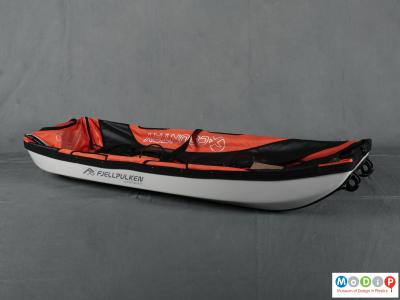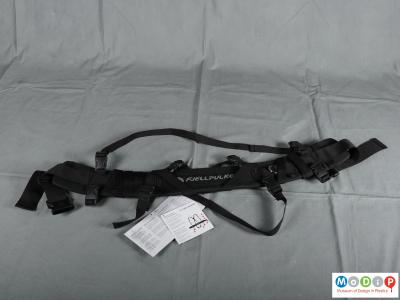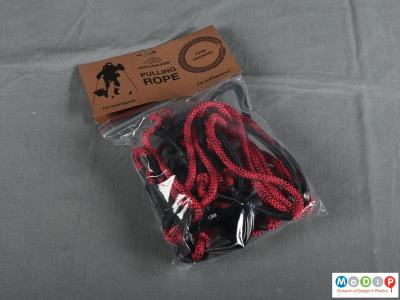Any planned, self-supporting expedition to a polar environment necessitates a large amount of kit for survival. Equipment is needed for safety, navigation, health, hygiene, cooking and camping and this, along with a variety of clothing, all needs to be carried. Sleds, often hauled by dogs, have been traditionally used to transport such supplies.
A pulk (1) is a small version of a sled, typically towed behind a skier and particularly popular in the Nordic countries. Boat-shaped to glide on top of the snow, they have been recorded in use for centuries, originally made of natural materials such as wood with animal skin covers. Modern hulls are now made in plastics such as low drag-resistant polyethylene or, as in this example, fibre-reinforced polyester, with synthetic covers and webbing. These materials provide a robust, durable,
rigid yet lightweight solution to transporting provisions across snowy terrain.
Pulks come in a variety of forms, sizes and weights, each suited to a particular application. The Fjellpulken Xcountry 118 touring pulk on display here is one of the smallest lengths available, designed to carry the equivalent load of two rucksacks with the width carefully calculated to ensure ease of movement and directional stability through snow. Other pulks may be narrower, intended for racing, or built longer and wider with a heavier load capacity for expedition use. Some are designed to carry a person for the purpose of rescue, or to carry young children and will include features such as built-in suspension and anti-roll protection.
The pulk is attached to the user via a harness (2) carried on the hips and/or shoulders with a choice of essentially two different hauling shafts: ropes (3) or poles. Whilst ropes enhance mobility, absorb shock, are useful in lifting or lowering the pulk over ridges, and practical in retrieving the pulk if it tips or gets stuck, this system can present difficulties on a steep downward slope when the weight of the pulk becomes dangerous. A rigid cross-pole system can provide stability and control but needs to be detached when access to the pulk is required or in a crevasse rescue situation.



